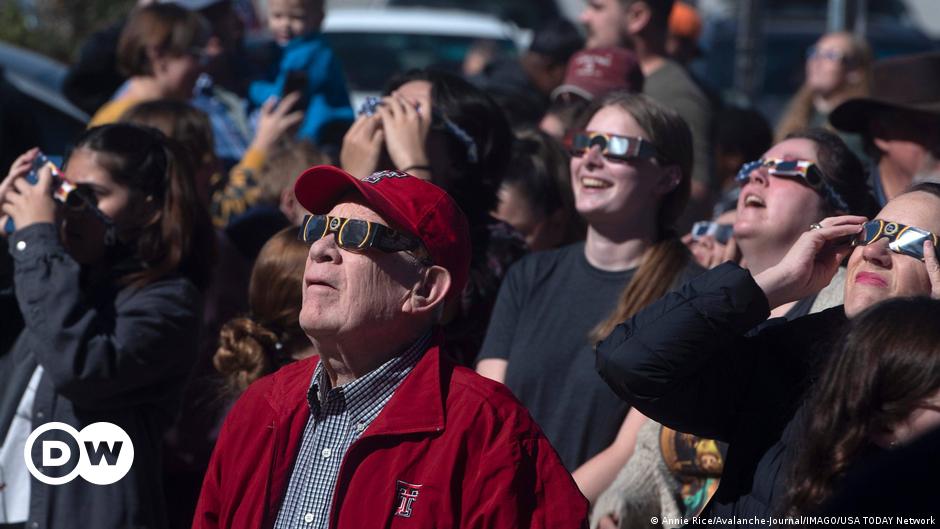Next Monday, April 8, is expected to witness an unprecedented celestial spectacle when the moon passes between the Earth and the sun, creating an eclipse that will attract the attention of millions. But beyond looking up, there's a curious recommendation for astronomy fans: wear green and red to experience a unique optical phenomenon on Earth.
With the advent of the eclipse, for a short moment, our world will be immersed in an extraordinary twilight where the colors we see will change radically. Under the eclipse, vibrant shades of red may turn black, while greens and blues will gain stunning intensity.
Purkinje effect
This strange change in colors is called the Purkinje effect, and it happens when we go from intense light to momentary darkness. Typically, it takes 20 to 30 minutes for this effect to become noticeable at sunset, but during an eclipse, the transformation is almost instantaneous, notes Nicole Bajek, MD, an ophthalmologist at the Cleveland Clinic. In statements by L Accuweather.
The recommendation is simple but interesting: wear red and green or be close to those who do, to intensify the experience of the Purkinje effect during the eclipse. According to Tracy Gregg, The phenomenon not only highlights the blues and greens, but it can also make the purple colors shine in a new splendor, immersing viewers in an almost dream-like environment, says a planetary scientist at the University of Buffalo.
Eclipse lights: the game of color and perception
the middle Science News He sheds light on this amazing phenomenon, explaining that the color changes we experience are due to the interaction between sunlight, the atmosphere, and our visual perception. On a clear day, the sky turns blue due to the scattering of blue light waves in the atmosphere, while objects illuminated by the sun reflect more red light, making these colors appear more vibrant. However, during an eclipse, the predominance of short-wave indirect light changes this dynamic, tilting the color balance towards blue.
Interestingly, this change cannot be captured in photographs because part of this phenomenon is due to how our eyes adapt to different lighting conditions. In light, the color-sensitive cones of the retina dominate our visual perception. But in the dark, colorless sticks take over. The Purkinje influence is evident in this interlude, revealing a world in which blue becomes the visual protagonist.
“The Purkinje effect during the next eclipse will take the whole experience from simply watching the sky darken to a real science display on your clothes. But to really see the changes in color saturation, many people have to wear these complementary reds and greens,” a spokesperson for the retailer Solar Eyeglasses said. Online: “Two or five out of a group of 100 won't help.” IFLScience.
So, as we prepare to view the eclipse, taking precautions to protect our eyesight, we also have the unique opportunity to become part of a live science experiment, simply by choosing our clothing wisely.
Felipe Espinoza Wang with information from ScienceNews, AccuWeather, Scientific America, Forbes, and IFLScience

“Proud web fanatic. Subtly charming twitter geek. Reader. Internet trailblazer. Music buff.”


:quality(85)/cloudfront-us-east-1.images.arcpublishing.com/infobae/7TXNTX4Z6ZADNGBBYTUT45QETM.jpg)
:quality(85)/cloudfront-us-east-1.images.arcpublishing.com/infobae/TR43PX4FQRCGJOYTK6DVVHHXGE.jpg)


More Stories
NASA finds rock on Mars that may contain ancient microscopic life
Astronauts stranded in space due to Boeing spacecraft malfunction won’t be able to return home for weeks
Download YoWhatsApp Plus 2024 Latest Updated APK for Android | WhatsApp Plus APK